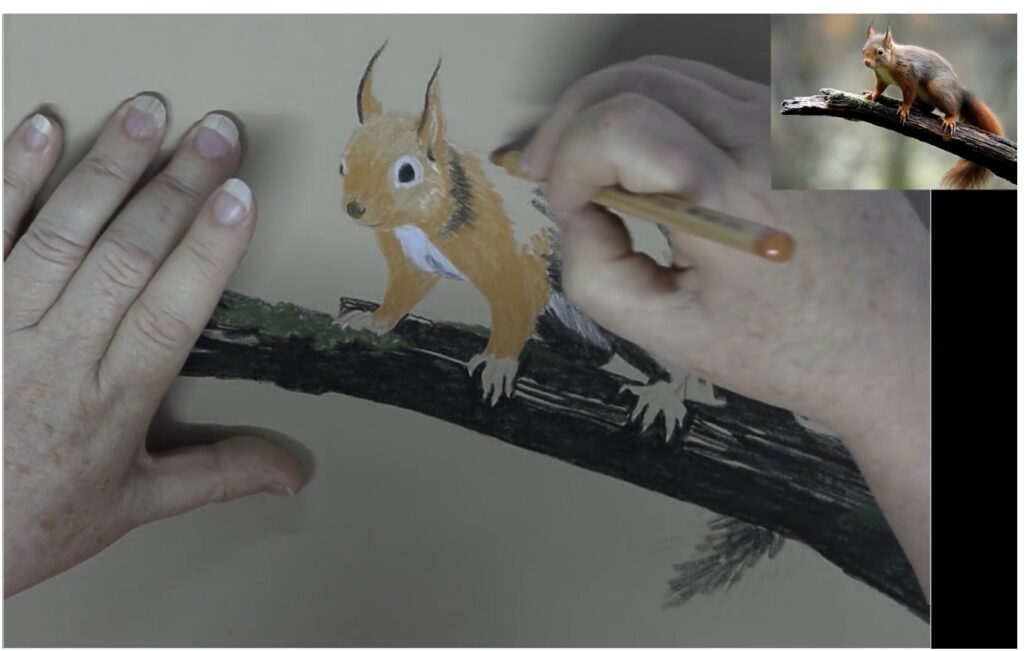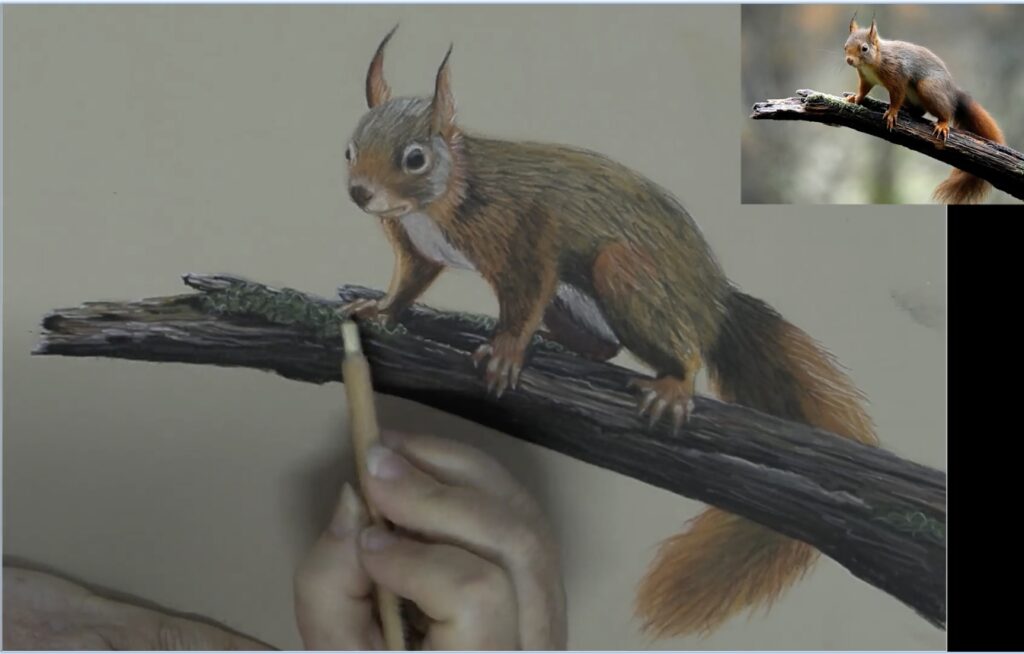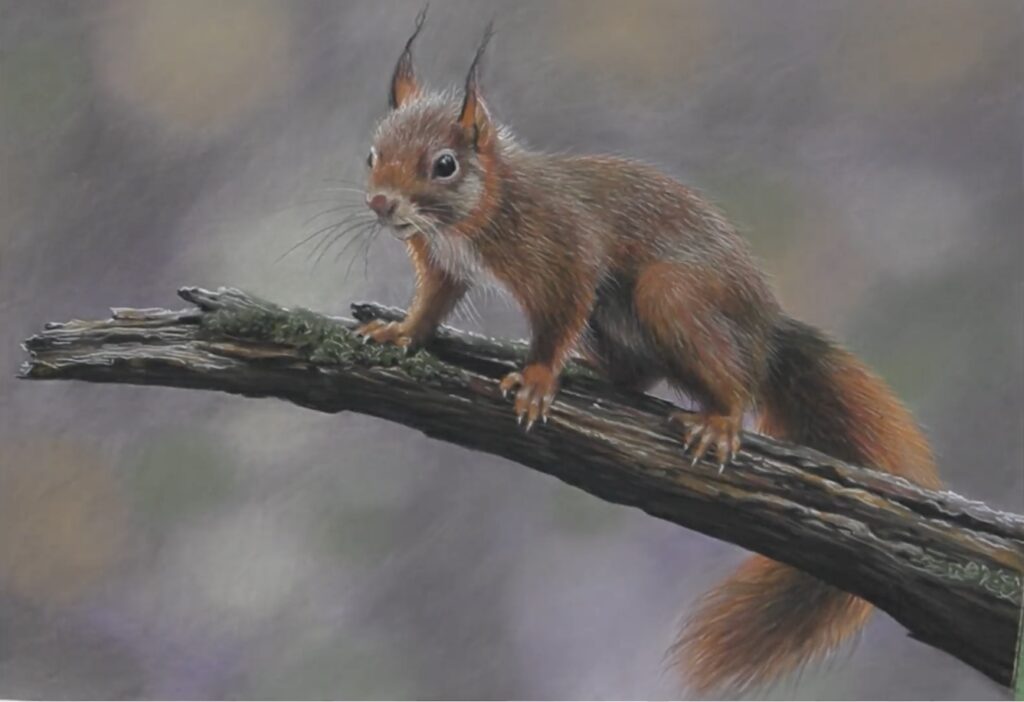Blending Pitt pastel pencils can enhance the look and texture of your artwork. When to blend your pastel pencil art depends on your artistic goals and the effect you want to achieve. Here are some general guidelines:
Initial Layers: Think of blending at the start of your artwork like applying a gentle makeup foundation – it’s your art’s way of saying, “I woke up like this… fabulous!”
With Sandra’s Wildart-teacher technique, blending is used in the early stage of your artwork (at the end of blocking in) to create a smooth, even base layer. This helps to establish the overall colours and shapes in your drawing. You blend the layer (after you create dust – ie when you have enough pastel on your paper surface), by rubbing it against the stroke with your finger. It is like dusting firmly over your whole artwork (haha this is the ONLY dusting I ever do). Do not be afraid – it will look dirty but you will be re-establishing the areas in the adjusting stage.

At the next stage of your journey, you are adding clean the layers by +adding more pastel and defining colour areas and lights and darks (not using your black and white yet). This now clearly identifies the different areas of your artwork. You will also add depth and dimension to your artwork and blending can be applied to shadows and highlights. This helps create a three-dimensional effect. This stage is done after adjusting your blocked in layer and instead of rubbed with your finger you pat the layers gently.

For very detailed or intricate parts of your drawing, you may choose to leave some areas unblended to maintain sharp lines and edges.

Texture and Highlights: Blending can soften the texture in some areas, so be selective. If you want to retain the texture and highlights of your pencil strokes, avoid over-blending in those areas.
Final Touches: Blending can be used as a finishing touch to unify the elements in your artwork, ensuring that all the colours and shapes work together harmoniously.
Experimentation: Ultimately, the decision to blend should depend on your personal style and the desired outcome for your specific piece. You can experiment with blending at different stages of your work to see what works best for you.
Additionally, the type of paper you’re using can affect the blending process. We recommend using Clairefontaine pastel matt for the best result.
The key is to balance blending with preserving the unique characteristics of pastel pencils, maintaining their texture and vibrancy. You don’t always have to blend every part of your artwork, and some artists prefer to leave some areas unblended for contrast and visual interest. Practice and experimentation will help you determine the best approach for your specific art piece.
Remember, the most important thing in art is to enjoy the creative process. If your artwork makes you chuckle or smile along the way, that’s a bonus!

Thanks for the advice you’ve given when drawing with Pitt pastel pencils, especially when I haven’t done one for a while. It helps to be able to go to your site to reaquaint myself with the method.